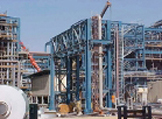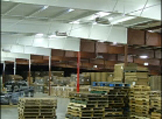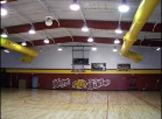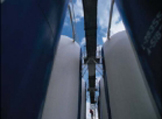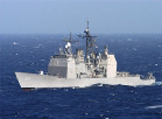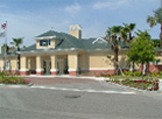Painting Terms

Learn Painting Terms - P
Browse Our Painting Terms
Padding Pad - A paint application tool made from a soft textile, such as cotton, used for furniture or to apply paint in tight areas such as under doors.
Paint - A coating including resin, a solvent, additives, pigments and, in some products, a diluent. Paints are generally opaque, and commonly represent the portion of the industry known as "architectural coatings."
Paint Additive - An additive added to a paint mixture, such as one that enhances its wear-resistant properties.
Paint Adhesion - The adhesion of a coat of paint to a substrate or to a previous coat of paint; or, cohesion within a coat of paint.
Paint Applicator - A tool (i.e., a brush, roller, or spray gun) that is used to apply paint to a surface.
Paint Base - Zinc white lead or any similar material used as a base for paint.
Paint Binder - A substance that is the nonvolatile component of the liquid vehicle of a coating. When paint dries, the binder becomes part of the solid film. It binds the pigment particles together and cements the paint film to the material to which it is applied. The amount of binder needed to completely wet a pigment is determined primarily the particle size, shape, chemical polymerization, and wetting properties of the binder.
Paint Chemistry - The science of chemistry as applied to paints.
Paint Degradation - The degradation of paint.
Paint Drier - Commonly a compound of lead and manganese which helps paint dry quickly. This compound can be harmful if used in excess.
Paint Failure - The failure of a paint coating, that is, the lack of good performance of a paint coating.
Paint Failure Analysis - Failure analysis performed to determine the cause(s) of a premature deterioration or loss of function of a protective or decorative coating.
Paint Film Weathering - The behavior of paint films when exposed to natural (atmospheric) weathering or accelerated weathering. Weathering can cause corrosion, erosion, or deterioration (changes in color, texture, strength, chemical composition, or other film properties).
Paint Formulation - The act of formulating paint, or the product of this process.
Paint Gauge - Instrument for measuring the thickness of paint film.
Paint Incompatability - adhesion loss from top coat of latex over many layers of old alkyd or oil based paint. Usually caused by - painting over 3 or more layers of alkyd or oil based paint with a latex top coat; inadequate surface preparation; or not using a recommended top coat.
Paint Light Stabilization - The process of stabilizing paint against light-induced fading, discoloration, or degradation, especially that caused by ultraviolet light, by means of incorporation of additives or through reformulation.
Paint Microbiology - A branch of microbiology concerned with microbes that grow in paint and those that grow on and disfigure painted surfaces.
Paint Remover - A liquid solvent which softens a paint or varnish film, so that it can be scraped, sanded or brushed off.
Paint Selection - Selection of a paint for a particular application.
Paint Stability - A measure of paint which signifies the extent to which it is not readily decomposed and will retain its characteristics.
Paint Stripper - A mixture that softens old paint or varnish and permits it to be removed with a scraper. Paint strippers usually contain solvent, wax, and other chemicals, and are suitable for removing most oil-based paints, thermoplastic paints, and latex emulsion paints.
Paint System - A succession of coats designed to protect a surface and give a decorative finish.
Paint Testing - The process of testing any of a variety of paint parameters, such as durability and flow.
Paint Thinner - Turpentine or petroleum spirits used to thin heavy bodied paint for easy application. Petroleum spirits cost less and are more commonly used than turpentine.
Paint Vehicle - The liquid component of paint in which the pigments are dispersed. It is composed of binder, solvent, and anything dissolved in the liquid portion of the paint.
Paint Weather Testing - A process where the durability of paint to naturally occurring weather phenomena is tested. Paint weather testing is usually done either out in a chosen area, such as the humid region in southern Florida or at an accelerated rate in a lab that simulates real-world conditions.
Painter - One who is knowledgeable and has skill in the painting trade.
Painter's Putty - A plastic substance made of whiting and linseed oil, sometimes including white lead. It's used as a filler for fixing panes of glass in window frames or to fill nail holes and defects in wood in preparation for painting.
Painting - The process in which paint is applied to a substrate's surface. Examples of paint application processes are brushing, spraying, dipping, rolling, spreading with a pad or mitt, and flow coating.
Particle Coating Process - Coating of a particle, such as of a colloidal particle.
Particulate Coating Process - A coating process in which particulate matter is applied to the surface of an object.
Pass - To move forward through in a single motion, from top to bottom or from one side to another, when applying paint, plaster or gunite.
Paste Filler - (See Wood filler)
Patch - To repair an area with filler.
Patchal Stick - A soft stick of putty colored to match stains, used as a wood filler on cabinetry and furniture.
Patching Plaster - A special plaster made for repairing plaster walls.
Pattern Length - The distance of one pass with a spray gun. Usually arm's length.
Pattern Width - The width of a sprayed paint coating laid down in one pass.
Peeling - The process where paint stripes off or flakes away due to improper cleaning or scuffing of the subsurface.
Penetrating Finish - A paint or stain material which is absorbed into the surface.
Permeable - Capable of allowing something (such as water vapor) to pass through without harm.
Petroleum Distillate - Liquid hydrocarbon solvents (such as mineral spirits) that are isolated or made from petroleum.
Phenolic Resin - A class of synthetic oil soluble resins, or plastics, made from phenol and formaldehyde.
Piano Like Finish - The highest quality, hand-rubbed finish.
Pick Up Sags - Brushing upward to level off a heavy coating of paint that has run down or sagged.
Pickling - Cleaning metals by dipping them into an acid or solvent solution.
Picture Framing - darker color where ceilings, windows, doors and corner areas were cut-in with a brush. Usually caused by improper cutting-in technique using too much paint; not maintaining a wet edge;or poor roller technique.
Pigment - The insoluble fine powder which gives paint its opacity and color.
Pile - Refers to the length or height of the material on a paint roller sleeve. High pile rollers have longer fibers holding more paint and can create some texture in the paint finish.
Pinhole - Very small holes in paint film, usually not deep enough to show undercoat.
Pitting - Small holes or cavities in a paint film caused by moisture in the air while drying, improper surface preparation or mixing incompatible materials. Also called pinholing.
Plaster Of Paris - A quick setting, pure white powder, used to set bathroom wall fixtures such as towel racks or used by craft groups for pouring molds and making plaster objects.
Plastic Finish - The finished appearance after polyurethane, varnish, lacquers, acrylics or vinyl's are applied.
Plastic Media Blasting - Abrasive blasting that uses plastic to remove coatings from metal, wood, fiberglass as well as other substrates.
Pockmarks - Small craters or cavities in the paint film.
Pole Gun - An attachment which extends the reach of a spray gun.
Polishing - (1) Rubbing a surface. (2) Shiny spots on painted surfaces resulting from rubbing, washing, wiping or vigorous scrubbing.
Polymer - A plastic-like material produced from chemical "monomers" which in turn have been produced from alcohols and petrochemicals. Certain polymers are used as latex paint and caulk binders. The binder's polymer particles are small and carried in water. The binder polymer particles and water mixture is known as an emulsion or as "latex."
Polymerization - The bonding reaction of two or more molecules of the same substance. This process forms plastics and plastic paints.
Polystyrene Resin - Synthetic resins used in concrete paints and varying in color from white to yellow.
Polyurethane - A clear plastic coating made from resin which forms, a tough, durable, abrasion-resistant finish when applied to floors, trim and doors.
Polyurethane Coating - A coating based upon vehicles containing a poly isocyanate monomer reacted in such a manner as to yield polymers containing any ratio, proportion, or combination of urethane linkages, active isocyanate groups, or poly isocyanate monomer. Polyurethane coatings can be obtained as air-drying, moisture-cured, or catalyzed types in single-package and multi-package formulations.
Polyurethane Varnish - A clear coating that is based on a modified alkyd resin.
Polyvinyl Acetate (PVA) - A colorless thermoplastic resin used as a drywall primer and in concrete paints. It's flexible, stable in light, transparent to ultraviolet rays, strong, tough, hard and abrasion resistant.
Polyvinyl Chloride - A synthetic resin used in the binders of coatings. Tends to discolor under exposure to ultraviolet radiation. Commonly called "vinyl."
Poor Hiding - failure of finish coat to cover previous coat. Usually caused by not enough paint; making severe color change; wrong brush or roller; improper or no priming; or over thinning the paint.
Porosity - The rate of absorbency of a surface. Unpainted drywall is considered to have a high porosity because it has a tendency to heavily absorb paint.
Porous Surface - A surface which has a high rate of liquid absorption.
Pot Life - The length of time a two-part paint product will remain usable.
Powder Coating Material - An organic coating in the form of a powder.
Powder Coating Process - Coating where a powder material is coated onto a surface often using electrostatic or compressed air method. The applied powder is usually heated to its melting point, after which it flows to form a smooth film.
Powdering - The crumbling of varnish into a fine dust like powder. Prefinished Material such as doors, moldings, cabinets or paneling which has been painted, stained, varnished or otherwise finished in the shop prior to arriving at a job site for installation. Prehung doors Doors that are delivered to the site already hung in a frame.
Preservative - A substance used to prevent the growth of microorganisms in or on an organic base. An example is an ingredient in latex paint used to prevent spoilage.
Pretreatment Coat - The wash primer or preprimer paint film that is applied under the regular primer paint coat and is used for better bonding and corrosion control.
Primary Colors - Colors that cannot be produced by mixing any two other colors. They are red, yellow, and blue.
Prime Coat - The first coat in most painting processes. It fIlls wood pores or protects metal surfaces and provides a hard opaque base for the application of following coats. Also called undercoat, sealer or ground coat.
Primer - The first coat of paint when two or more coats are applied, acting as a bond for the remaining coats.
Primer Sealer - A priming system that minimizes or prevents the penetration of the topcoat into the substrate
Print Free - Paint dried to the stage where the impression of a hand or brush will not show.
Print Resistance - The capability of a coating to not retain pressed-in markings from an object placed on it.
Print Resistance Failure - marking of paint from weight of object. Usually caused by not allowing enough time for proper curing and drying of paint; applying finish coat before primer has dried; or premature placement of weighty objects on painted surface.
Propellant - The gas used to expel materials from aerosol containers.
Protective Coating Material - A coating material applied to the surface of a material, substance, or object to afford a measure of protection from, for example, abrasive substances, corrosive chemicals, and ultraviolet light.
Protective Life - The length of time a paint or stain coating continues to protect a surface.
Pullman - A bathroom vanity.
Pumice - A highly porous, fine lava used as a rubbing compound for varnish or enamel.
Punch List - A list, made near the completion of work, which indicates items of work which must be completed by a contractor or subcontractor before the job is complete as specified in the contract documents.
Putty - A stiff, dough-like material consisting of a pigment and a vehicle used to fill imperfections in wood or metal surfaces.
Putty Coat - The final smooth coat of plaster.
Putty Knife - A flat-bladed tool for filling cracks and holes with spackling compound.
PVA (Polyvinyl Acetate) - A colorless, thermoplastic, water soluble, resinous high polymer derived from the polymerization of vinyl acetate with a catalyst; used as a latex binder in certain, generally lower quality water-base coatings.
PVC (Pigment Volume Concentration) - The ratio of the volume of pigment to the volume of total nonvolatile material (i.e., pigment and binder) present in a coating. The figure is usually expressed as a percentage.
Pyroxylin - (See Cellulose nitrate)
Call Now - 1.800.354.9165 - Toll Free

